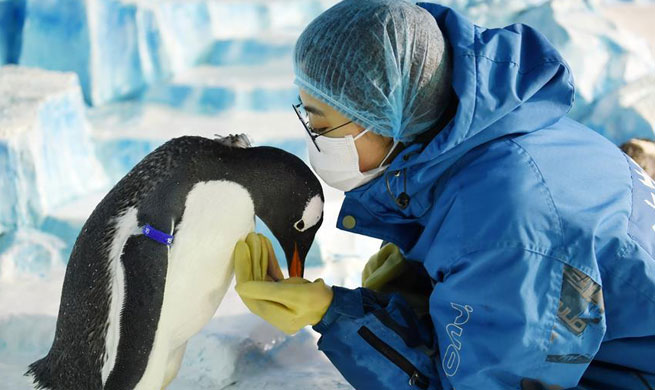NANJING, Feb. 8 (Xinhua) -- China on Thursday announced its top 10 palaeontological findings of 2017, saying the findings could offer insight into the evolution of life.
It is the second year running that Palaeontological Society of China has selected and published its top 10 findings.
Among the findings is research on human cranial fossils found in Xuchang in central China's Henan Province dating back 105,000 to 125,000 years ago.
Chinese researchers found that the fossils shared the characteristics of Chinese hominids, early modern humans and Neanderthals.
Researchers said the features of Xuchang Man were likely a result of crossbreeding between humans in the east and west, challenging the popular view of humankind's African origin.
Others include the discovery of over 200 preserved eggs of pterosaurs that provide new insight into the life of the rulers of the skies in the age of dinosaurs.
More importantly, 16 of the eggs contain embryonic remains of varying intactness, representing the first time three-dimensional pterosaur embryos have been discovered.
The other eight findings were:
-- the Phanerozoic brachiopod genera of China
-- new gliding mammaliaforms from the Jurassic
-- meiofaunal deuterostomes without anuses from the basal Cambrian of Shaanxi
-- geomicrobial records indicating extreme ancient environmental events.
-- a bird fossil from 130 million years ago, indicating decoupled evolution between tail bone and tail fanning
-- a unique growth strategy in the Earth's first trees revealed in silicified fossil trunks from China.
-- rove beetles in Burmese amber revealing the paleodiversity of mushrooms in the Cretaceous and the earliest social parasitism.
-- late Permian wood-borings revealing an intricate network of ecological relationships.

















